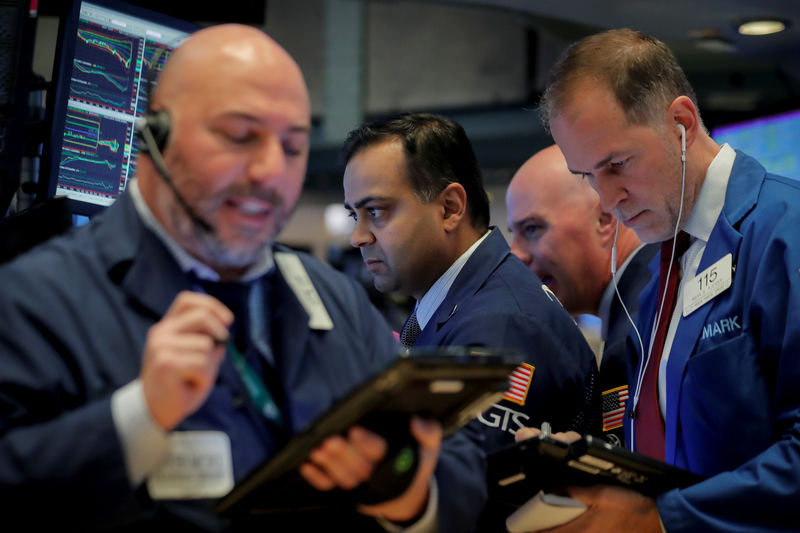 © Reuters. Traders work on the floor of the NYSE in New York
© Reuters. Traders work on the floor of the NYSE in New YorkBy Karin Strohecker
LONDON (Reuters) – Global investors raised exposure to U.S. assets in October, increasing holdings of American stocks to the highest in at least five years and snapping up bonds, with fund managers optimistic Wall Street can avoid a full bear-market reversal before 2019.
World equity markets have had a brutal October, confronting higher borrowing costs, escalating Sino-U.S. trade tensions and ebbing economic growth and earnings. Combined with the economic issues are myriad political risks, ranging from Italy’s budget row and U.S. mid-term elections to Britain’s Brexit worries.
A broad selloff on U.S. equity markets put the S&P 500 () index on track for a drop of around 8 percent in October – its worst monthly decline in more than eight years.
Yet fund managers around the globe increased their exposure to U.S. equities to 43.3 percent, from 42.7 percent in September, according to Reuters’ monthly asset-allocation poll of 58 asset managers conducted between Oct 15-31.
What’s more, all but one of the respondents said they did not expect the correction to extend to peak-to-trough losses of 20 percent or more – the technical definition of a bear market – before the end of the year. The S&P 500 hit a record high in late September.
“This volatility may continue to year-end, but a full reversion to a bear market trend is something different and in our view the configuration that is opening up before us has more to do with a correction,” said Pascal Blanqué, group CIO of Amundi. “The bear checklist is not yet flashing red.”
The rise in exposure to North American stocks came at the expense of holdings in Japan, emerging Europe, the United Kingdom and Africa-Middle East holdings. The latter two were at their lowest in more than five years.
“Clearly, we have seen some weakness on Wall Street over the past few weeks, but the U.S. equity market remains the only trade in town,” said Peter Lowman, CIO at Investment Quorum.
Allocations across global balanced portfolios remained broadly unchanged, with equities accounting for 47.9 percent and bonds 39.0 percent. Investors flagged an escalation in trade tensions and the U.S. Federal Reserve’s accelerating the pace of interest rate hikes as some of the biggest risks on the horizon.
Within fixed-income allocations, fund managers also preferred North American bonds, raising exposure to 40.7 percent from 40.1 percent in September – the highest since June 2015.
“We prefer credit over equities given where we are in this cycle; it is mature,” said Thomas Becket at Psigma. “We favor U.S. bonds, since this is an economy we see growing strongly and we want to gain exposure to that growth.”
Data out on Friday showed U.S. gross domestic product grew more than expected in the third quarter, underlining the outperformance of the U.S. economy
Meanwhile, fund managers across most regions reduced their holdings of UK bonds to their lowest in more than five years at 5.7 percent, down from 7.6 percent in September.
Asked whether they expected the British pound
Exposure to Japanese fixed income declined to just over 12 percent from nearly 15 percent the previous month.
Source: Investing.com





























